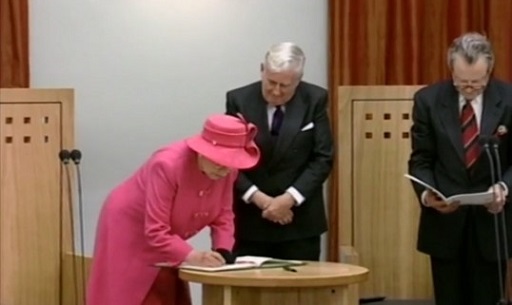2.5 Devising the new Assembly
Following the yes vote in 1997, work began in earnest to devise the rules which would govern Welsh devolution. Unlike Scotland, where proposals for a Scottish Parliament had been under discussion in a constitutional convention for many years, proposals for the devolved administration in Wales were brought together in a relatively short time.
Labour’s White Paper, A Voice for Wales, set out how the 60-member Assembly for Wales would take on the functions which had previously been carried out by the Secretary of State for Wales. The Assembly would be led by an executive committee comprising the chairs of several subject committees.
Following the affirmative vote, work began on the Government of Wales Bill 1998. The proposals in this were slightly different again. The Bill put forward proposals for a First Secretary to lead an executive committee. The elected body would be known as the ‘National Assembly’. Unusually, the executive and the legislature were not envisaged as separate entities but one ‘corporate body’ which would make secondary legislation or orders in devolved areas. Any primary legislation would be made by at Westminster in both devolved and reserved areas.
The Bill also set out the process for electing Wales’ 60 Assembly Members: 40 in constituencies coterminous with Westminster and a further 20 regional AMs to be elected through a system of proportional representation known as the D’Hondt method.
Funding for the Assembly would be provided by the UK Government through a system known as the ‘block grant’ allocated on the basis of the Barnett formula. You will read more about this later in the course.
Importantly, the Bill also contained a clause which allowed for future transfer of further powers which suggested its authors believed the process would be ongoing.
Further reading - designing Welsh devolution
20 years on, Secretary of State for Wales, Ron Davies reflects on designing Welsh devolution in a lecture hosted by the Wales Governance Centre.
See the Further Reading section for a link to this video.
The Bill passed on 31 July 1998. The first elections to the National Assembly were held on 6 May 1999 with Labour returned as the largest party. On 12 May 1999, the National Assembly for Wales sat for the first time with Presiding Officer, Lord Dafydd Elis-Thomas in the chair. On 1 July 1999, the Welsh Office became the Wales Office.

